Sangak is a whole-wheat sourdough flatbread that is considered Iran’s national bread. While normally baked at 600-700 degrees Fahrenheit, this recipe has been created to be able to make it in your home oven.
The name gives a clue as to how it is made: ‘sang’ means pebble while ‘sangak’ is a Farsi word that means little stone. This Iranian bread is traditionally cooked on tiny river stones in the oven, giving it a wavy texture.
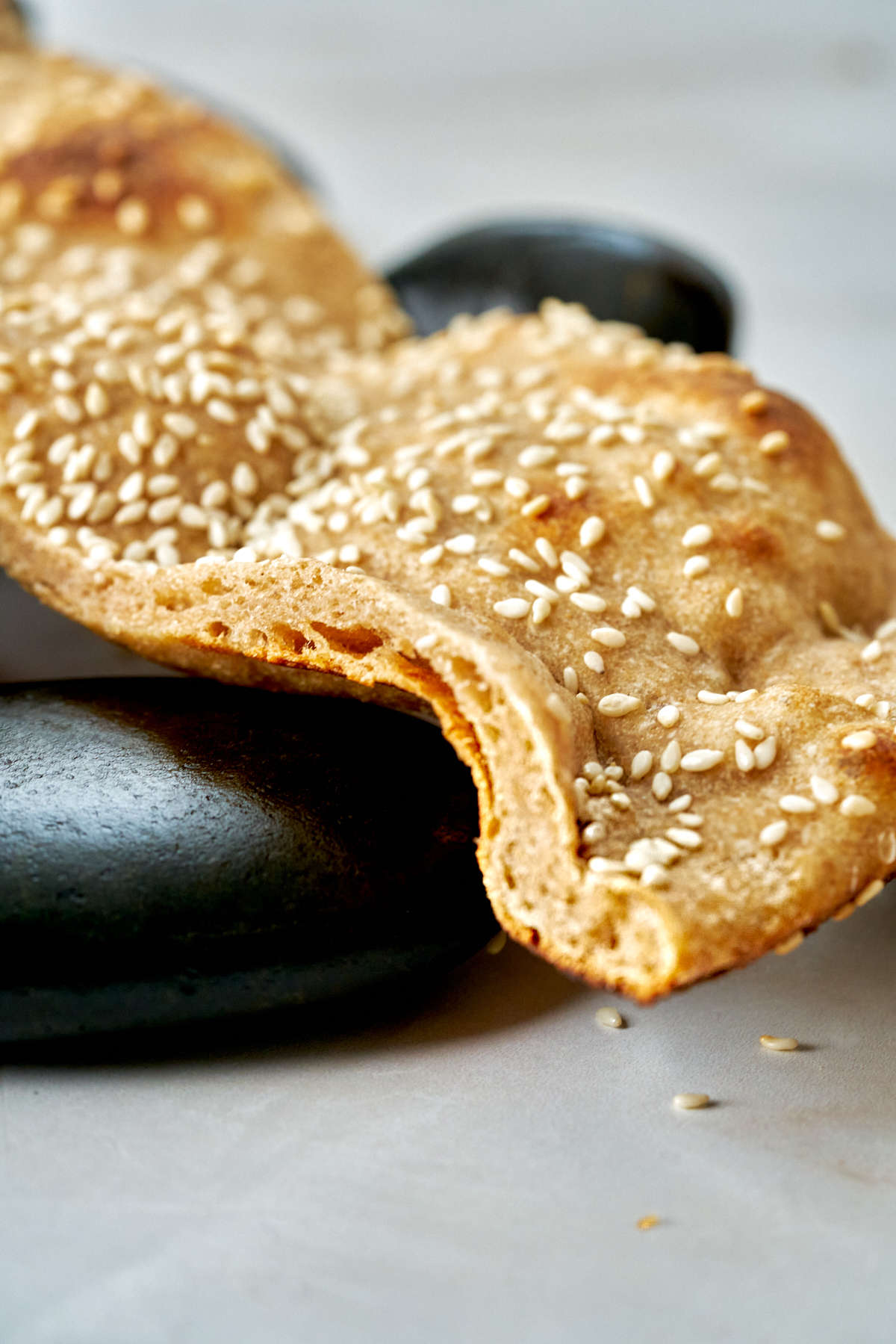
🌟Why you’ll love this recipe
🧾Ingredients in this recipe
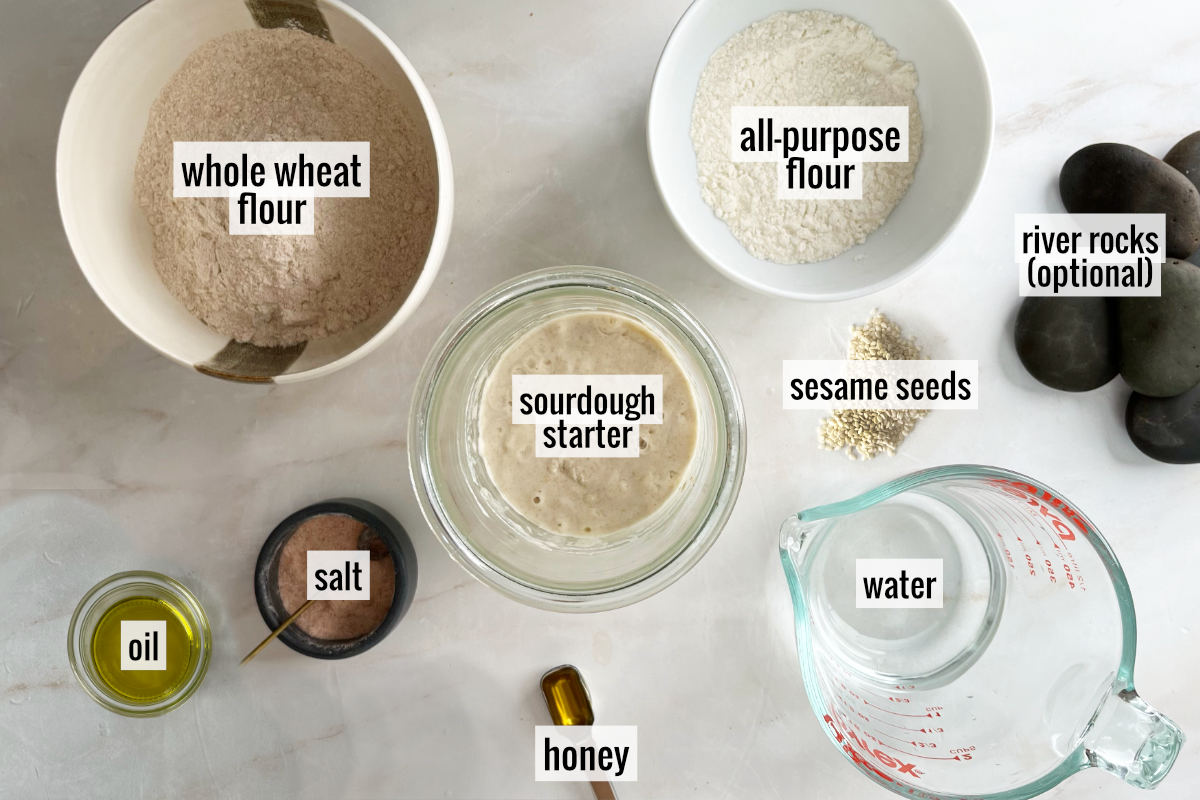
See the recipe card for full information on ingredients and quantities.
👩🍳How to Make This Recipe
Start by making your sourdough starter if you don’t already have one, which should be done at least 5 days in advance. This is a key element to nailing the flavor for this bread. I use this recipe by King Arthur Flour.
If using river rocks: CAUTION!! Wash the river rocks and let them dry overnight. It is important for them to be completely dry so they do not explode in the oven.
The Dough
Mix together the sourdough starter, whole wheat flour, all-purpose flour, honey, water, and salt. Don’t knead them – just incorporate the ingredients all together. Cover this mix with a silicone cover or cling wrap and let it rise for 1 hour.
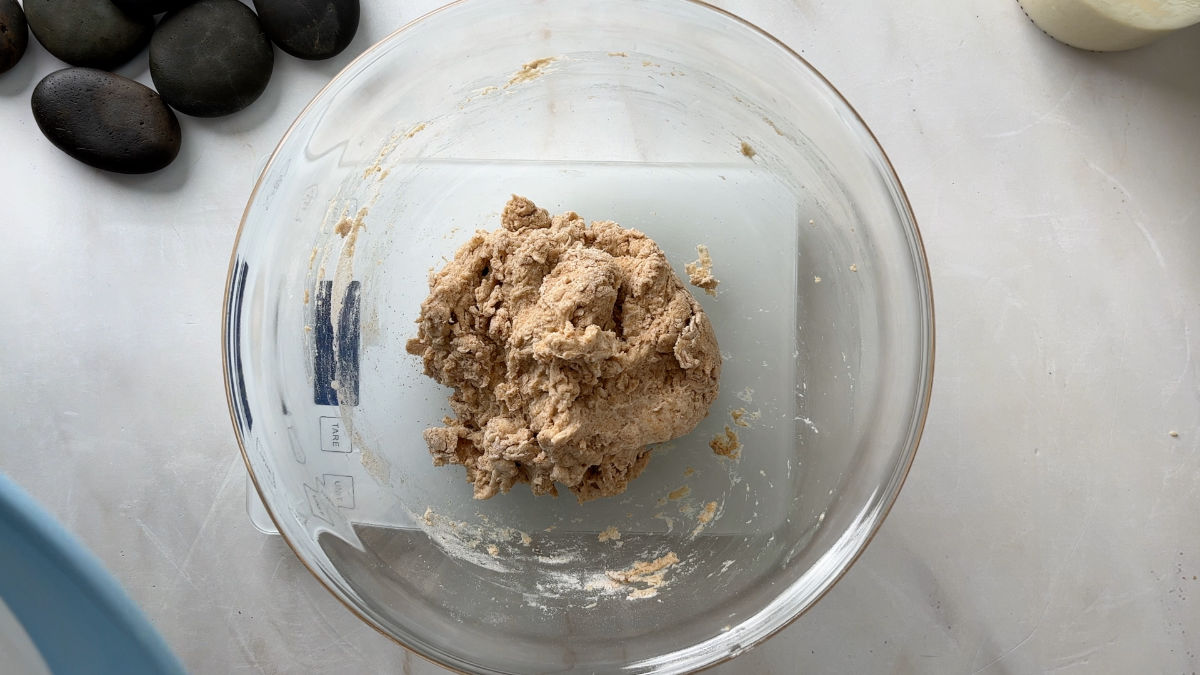
Round 1: Fold the dough from the outside edges into the center 4 times to form a ball and flip it over so it is folded side down. Now add the olive oil. Roll the dough ball to coat it in the olive oil. Cover and let it rise for 30 minutes.
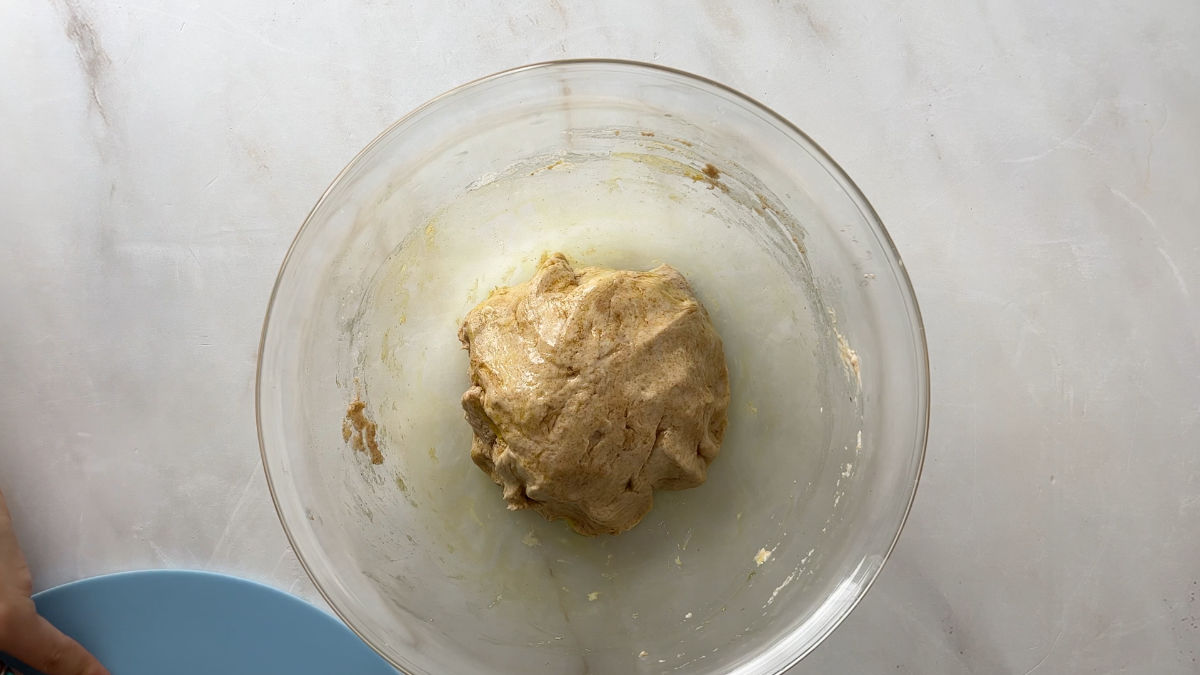
Round 2: Again, fold the dough from the outside edges into the center 4 times to form a ball and flip it over so it is folded side down. Cover and let it rise for 30 minutes.
Round 3: For the third time, fold the dough from the outside edges into the center 4 times to form a ball and flip it over so it is folded side down. Cover and let it rise for 30 minutes.
Round 4: Final time! Fold the dough from the outside edges into the center 4 times to form a ball and flip it over so it is folded side down.
Set the dough aside while you preheat the oven to 500F. If you are using a baking steel and/or clean, dry river rocks, place them in the oven so that they can also preheat with the oven.
Pro Tip
Let the dough rise this last time for a full 30 minutes even if your oven is already preheated. It’s crucial to let your oven completely preheat, especially if you are baking on river rocks and/or a baking steel.
Baking the bread
You can bake this bread using different methods: using a baking sheet in the oven, a baking sheet on top of a preheated baking steel, on a preheated baking steel with preheated river rocks, or just on a preheated baking steel.
If using a baking sheet and/or baking steel
Lightly oil the baking sheet. Press your oiled fingers into the dough directly on the baking sheet and stretch it out until it is approximately 1/4 inch thick. Cover with sesame seeds.
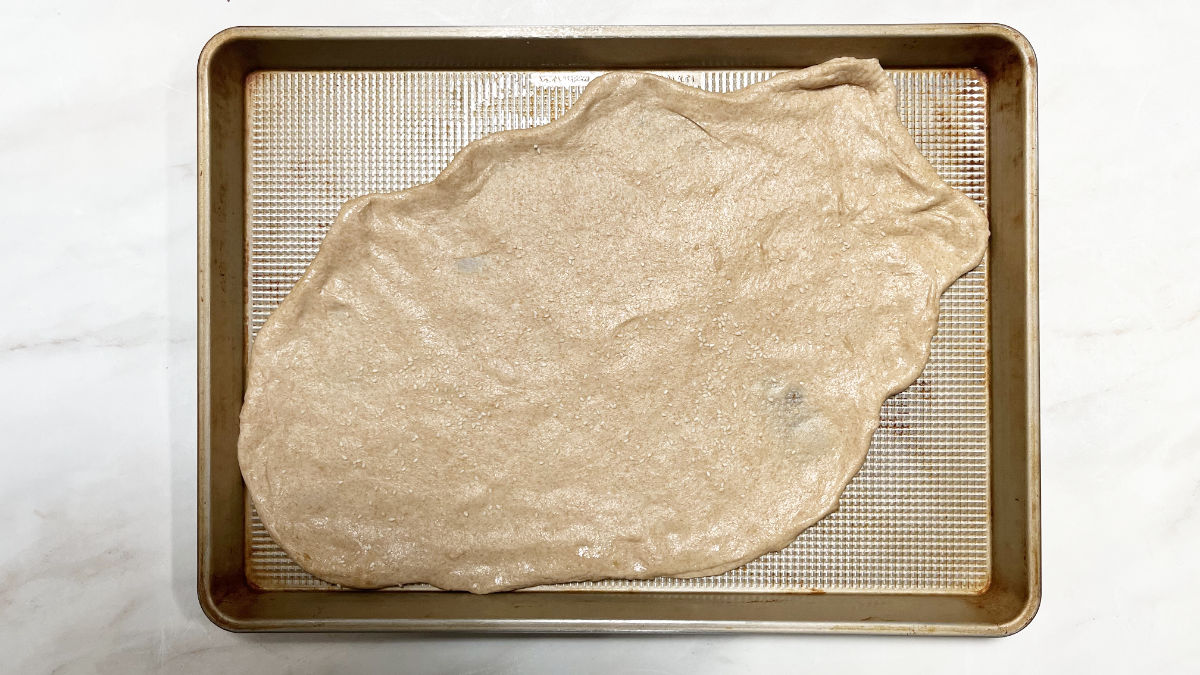
It will be uneven and misshapen, and that’s okay! Lightly oil the top of the sangak before adding it to the oven.
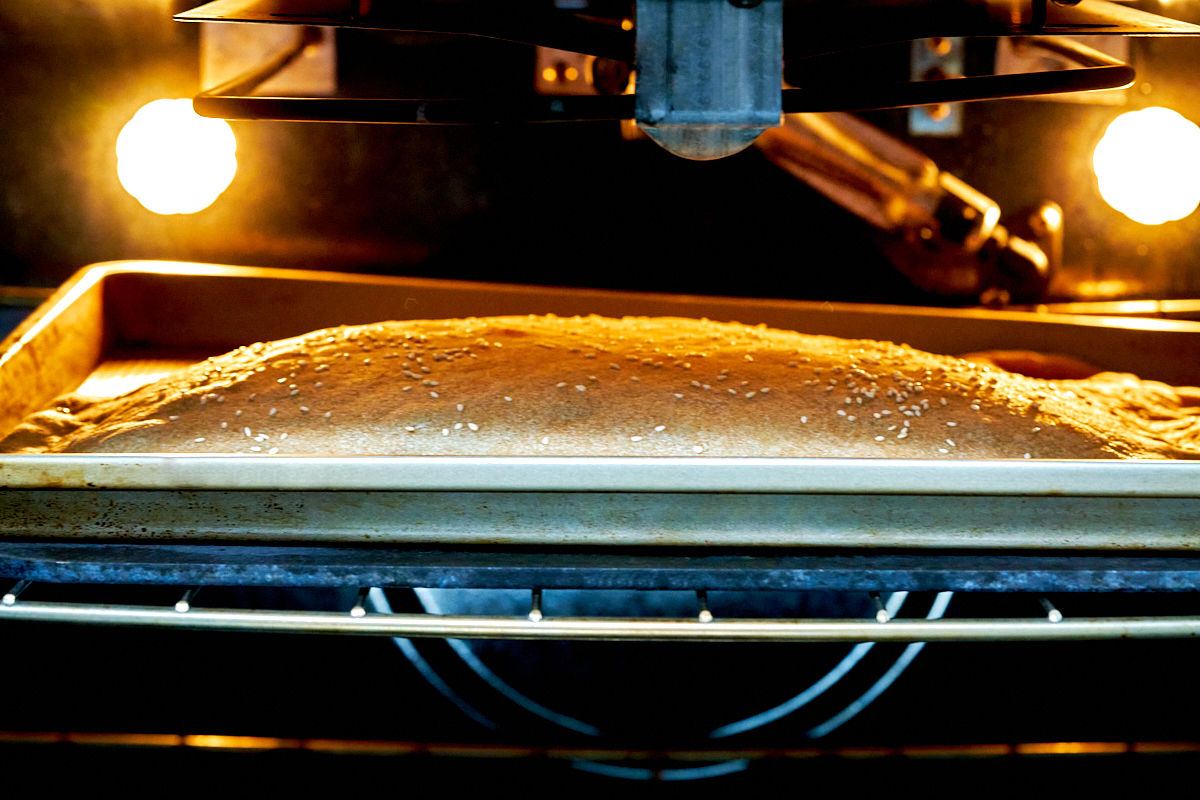
If using a baking steel and/or river rocks
Just before putting the bread in the oven, oil a work surface or a clean countertop. Press your oiled fingers into the dough on the surface and stretch it until it is approximately 1/4 inch thick. Cover with sesame seeds.
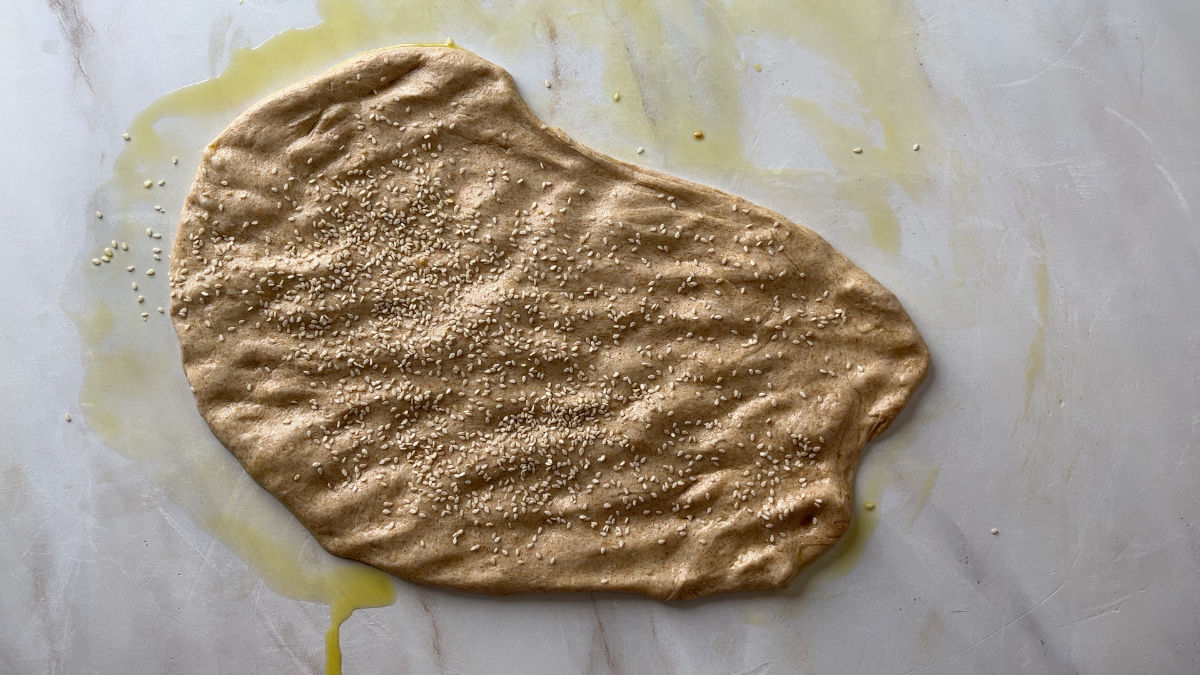
It’s okay if it looks uneven and misshapen, especially after this next part: Lift the dough up and gently place it directly on the baking steel and/or draped river rocks. BE SLOW AND CAREFUL as the baking steel/rocks will be very hot.
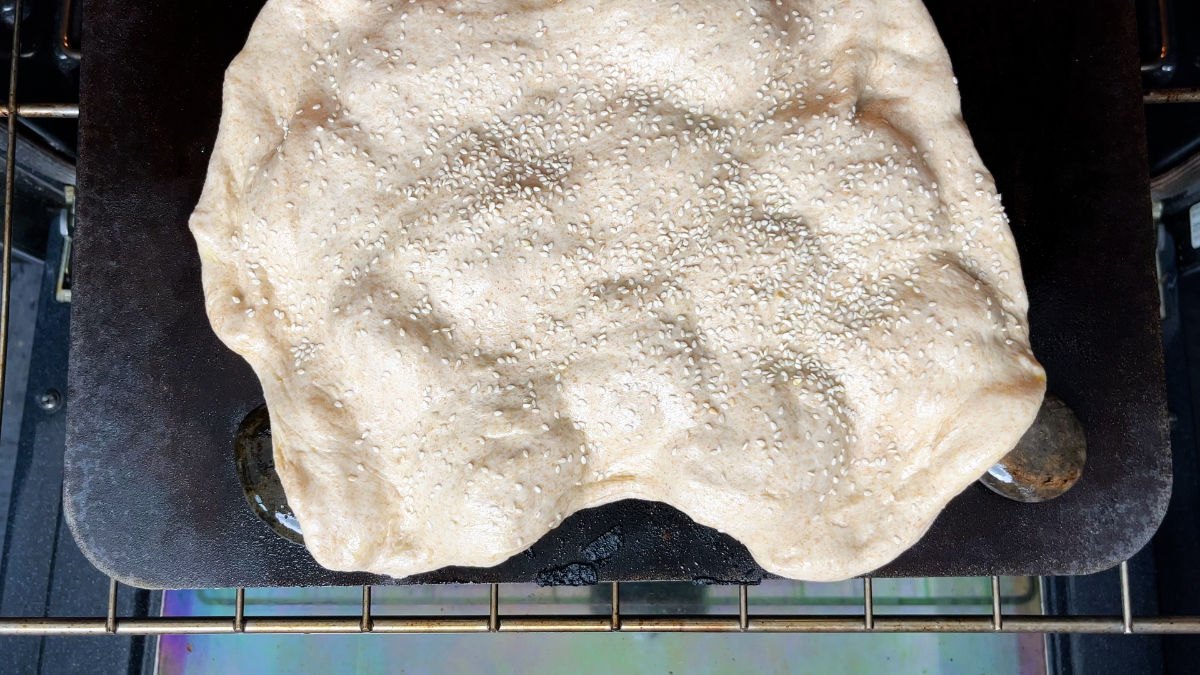
Pro Tip
Sangak is classically cooked on tiny pebbles. I have found it to be easier and safer to use larger river rocks. Safer because you don’t have piping hot pebbles falling off your bread, and easier because you can remove each river rock with tongs instead of trying to shake off a ton of tiny pebbles.
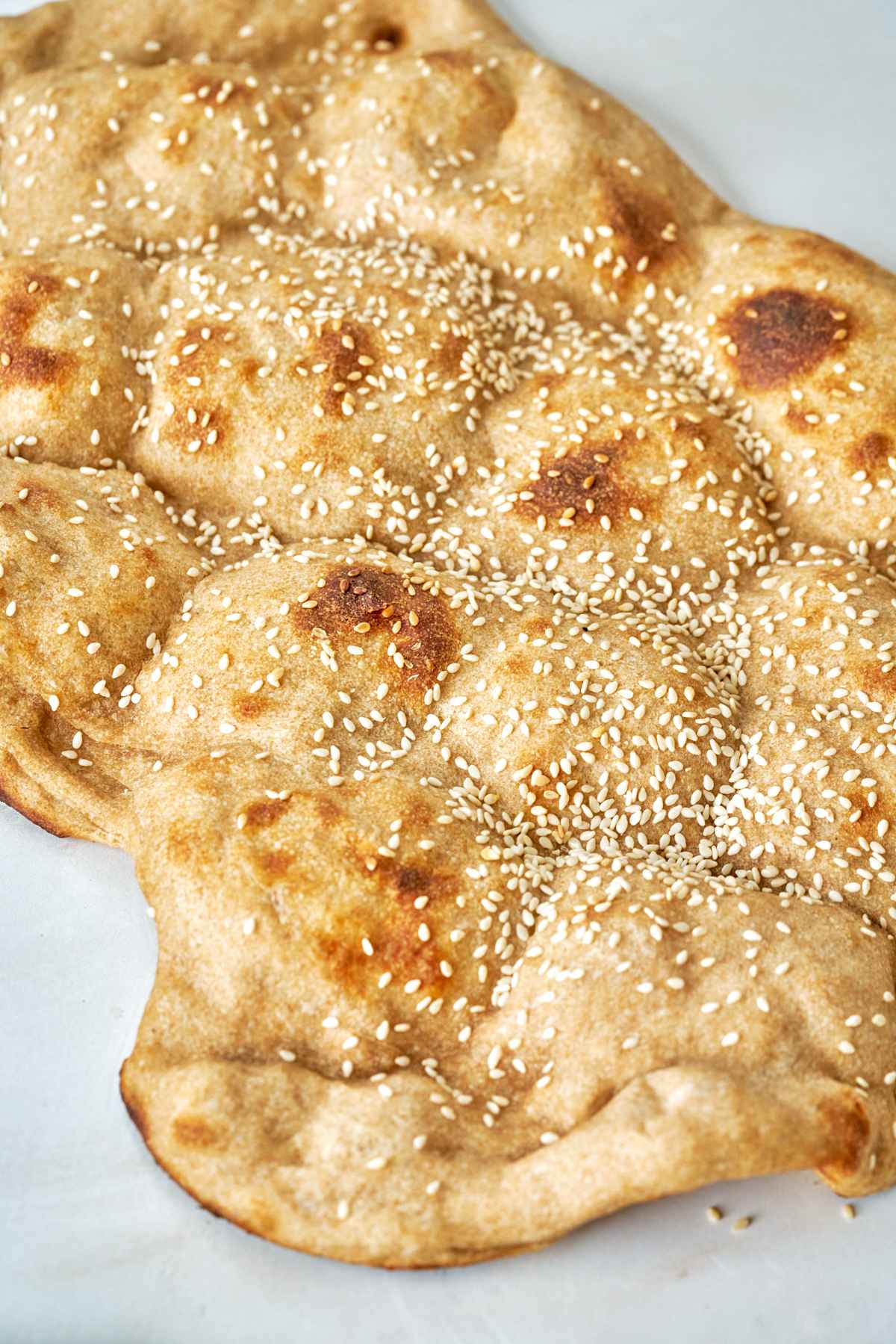
Lightly spray with olive oil spray or a quick drizzle and bake for 6-9 minutes until the bread is just becoming golden brown. This bread can have some crispy spots, but it is not meant to be crispy all over.
Let it cool briefly and enjoy it while it’s warm and fresh.
Sangak tastes wonderful when its hot and fresh. It’s great paired with sweet options like sarsheer with jam or honey, or simply butter. Sangak is a staple of a great Persian breakfast enjoyed with feta, tomato slices, and cucumber slices. It’s also great wrapped around kabobs.
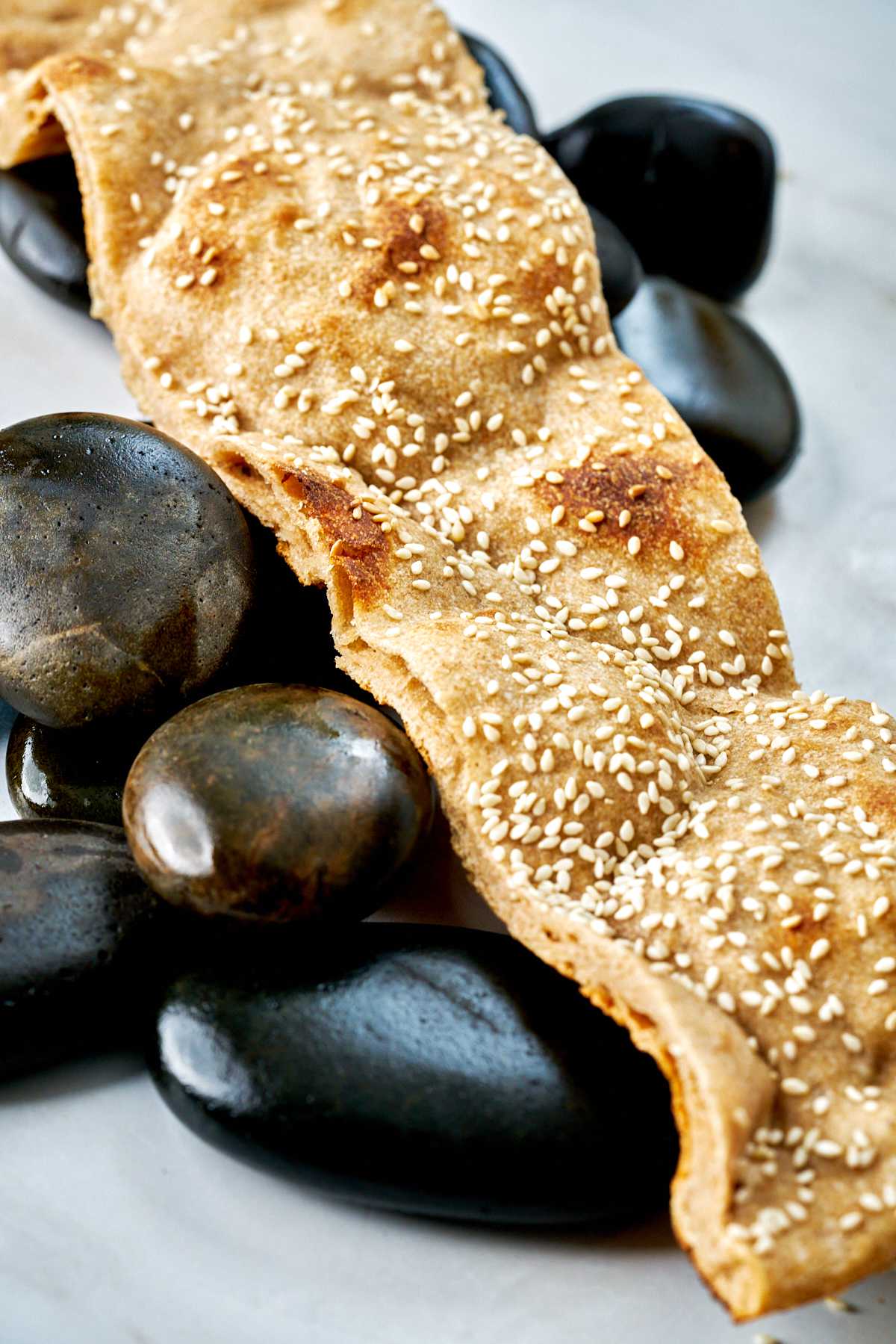
🥖 Related Recipes
Calling all bread bakers – flex your baking muscles with these wonderful and fun bread recipes.
I love hearing from you! You can also FOLLOW ME on INSTAGRAM, TIKTOK, and PINTEREST to see more delicious food and what I’m up to.
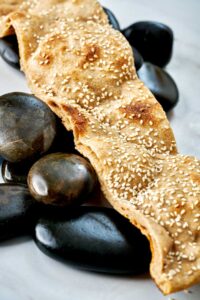
Sangak (Persian Flatbread)
Print Recipe SaveEquipment
- baking steel optional
- river rocks*** optional
Ingredients
- 90 grams sourdough starter approximately 1/3 cup
- 130 grams whole wheat flour 1 cup
- 40 grams all-purpose flour 1/3 cup
- ½ tsp honey
- 118 grams water 1/2 cup
- ½ tsp salt
- 1 tablespoon sesame seeds* or more
- 1 tablespoons olive oil plus more for cooking
Instructions
- Mix together the sourdough starter, whole wheat flour, all-purpose flour, honey, water, and salt. Don’t knead, just incorporate them all together. Cover and let it rise for 1 hour.
- Round 1: Fold the dough into the center 4 times to form a ball and flip it over so it is folded side down. Add the olive oil. Roll the dough ball to coat it in the oil. Cover and let it rise for 30 minutes.
- Round 2: Fold the dough into the center 4 times and flip it over so it is folded side down. Cover and let it rise for 30 minutes.
- Round 3: Fold the dough into the center 4 times and flip it over so it is folded side down. Cover and let it rise for 30 minutes.
- Round 4: Fold the dough into the center 4 times and flip it over so it is folded side down. Cover and preheat the oven to 500F. If using a baking steel and/or river rocks, place them in the oven to preheat with the oven.
- Let the dough rise for a full 30 minutes even if your oven is already preheated.**
- If using a baking sheet and/or baking steel: Lightly oil the baking sheet. Press oiled fingers into the dough directly on the baking sheet and stretch it until it is approximately 1/4 inch thick. It will be uneven and misshapen and that is OK. Lightly oil the top before adding it to the oven.If using a baking steel and/or river rocks: Just before adding it to the oven, oil a working surface or a clean countertop. Press oiled fingers into the dough on the surface and stretch it until it is approximately 1/4 inch thick. It will be uneven and misshapen and that is OK, especially after this next part: Lift the dough and gently place it directly on the baking steel and/or river rocks. BE CAREFUL as it is very hot.
- Lightly spray with olive oil spray or a quick drizzle of olive oil and bake 6-9 minutes until just becoming golden brown. This bread can have some crispy spots, but it is not meant to be crispy.

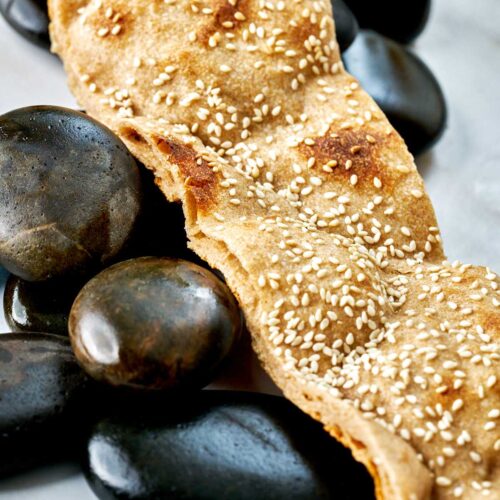
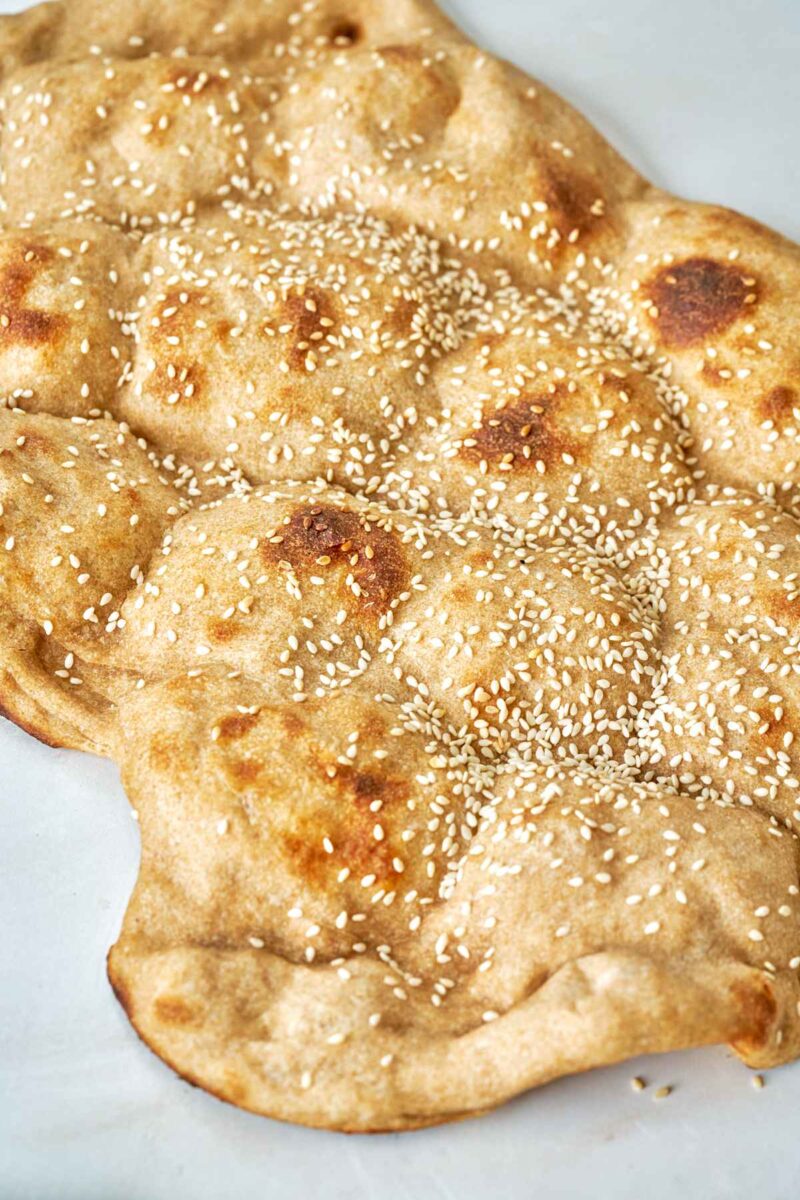
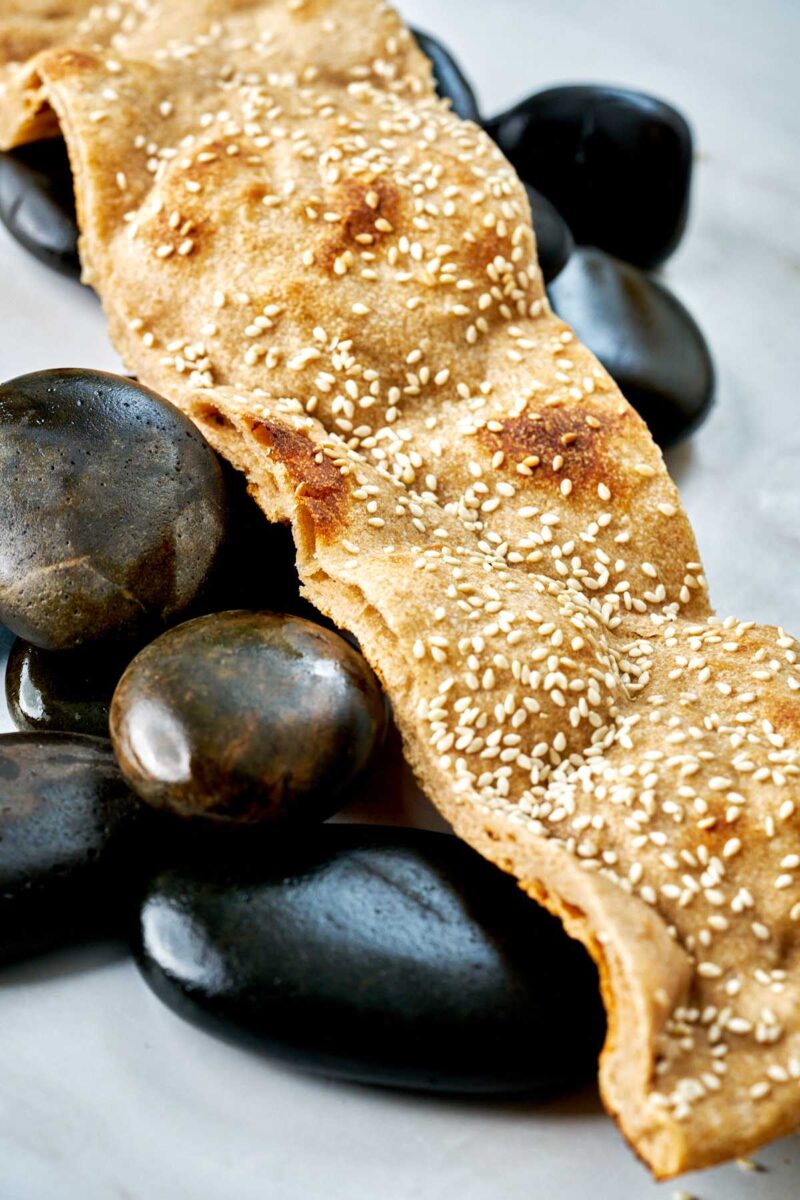
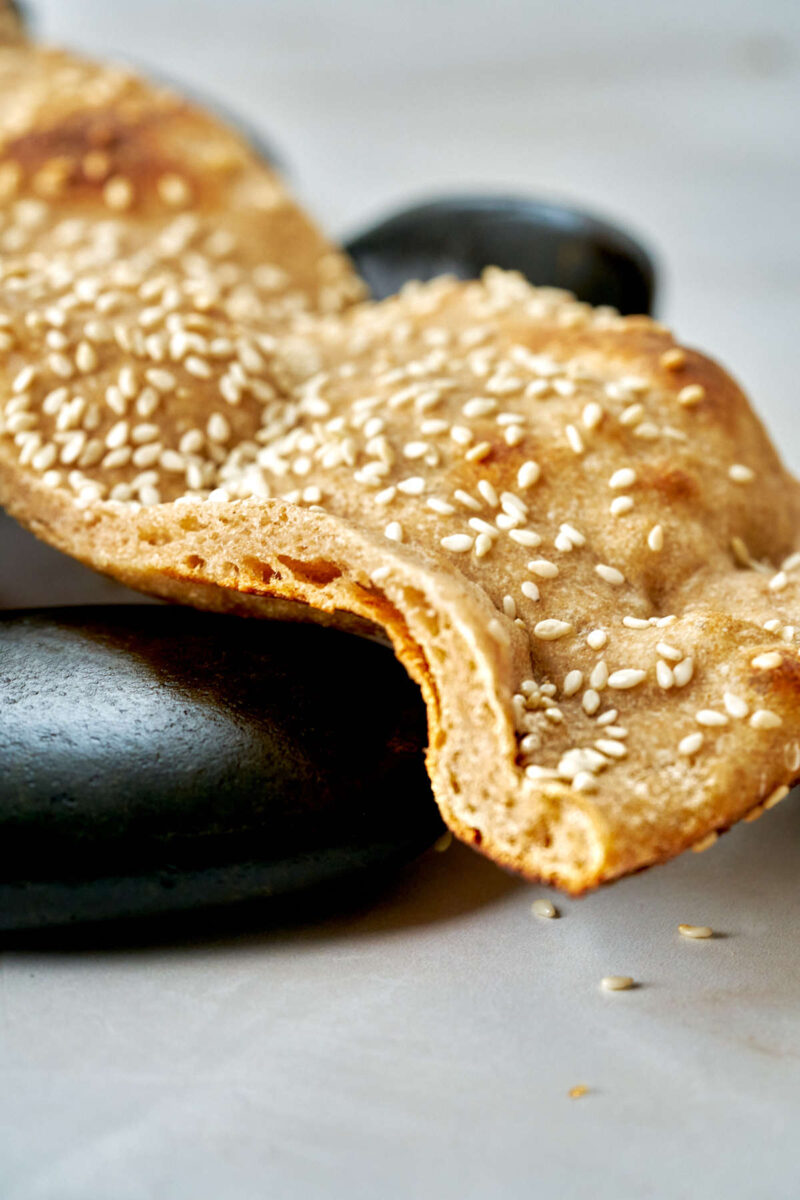
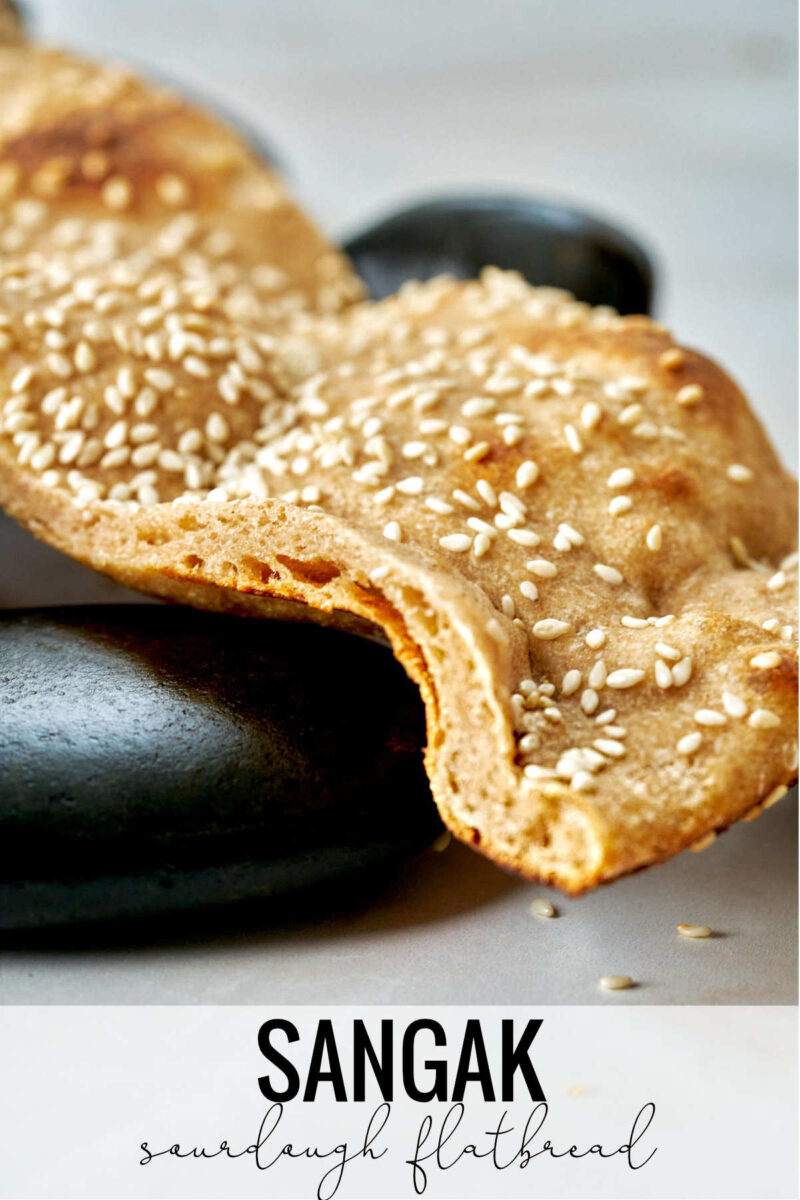
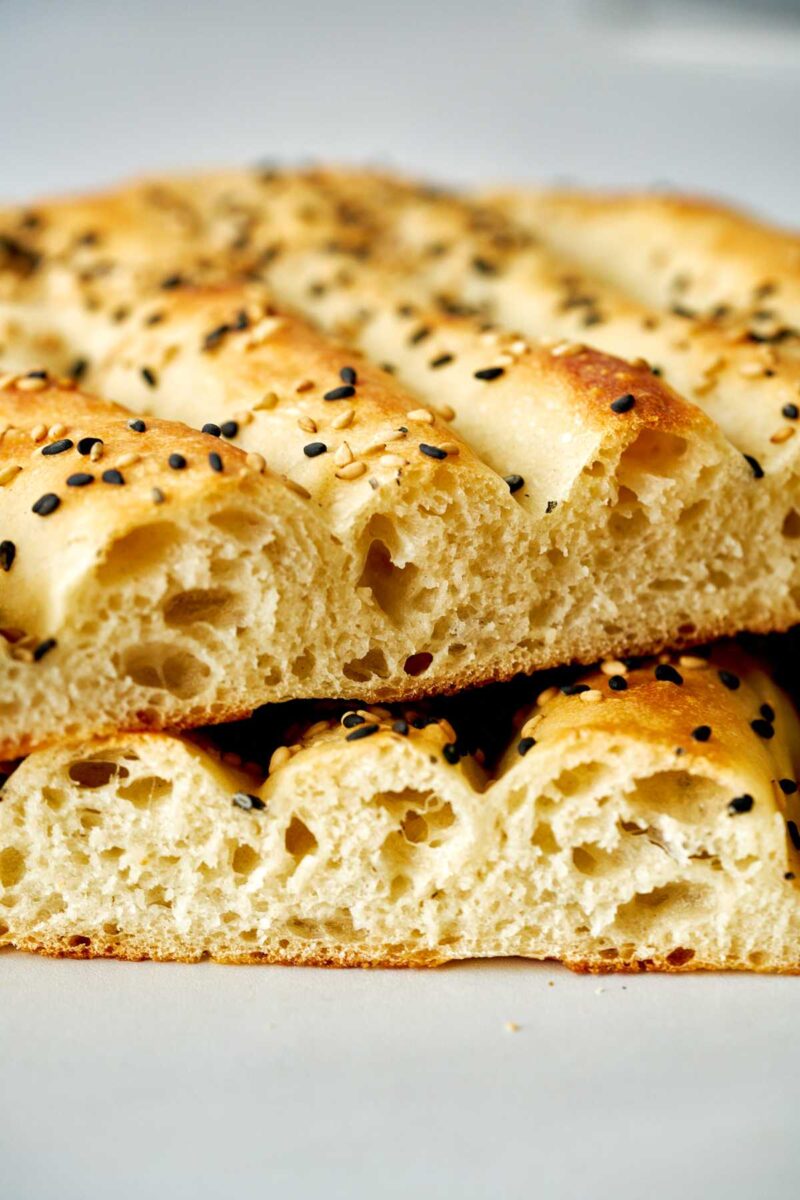
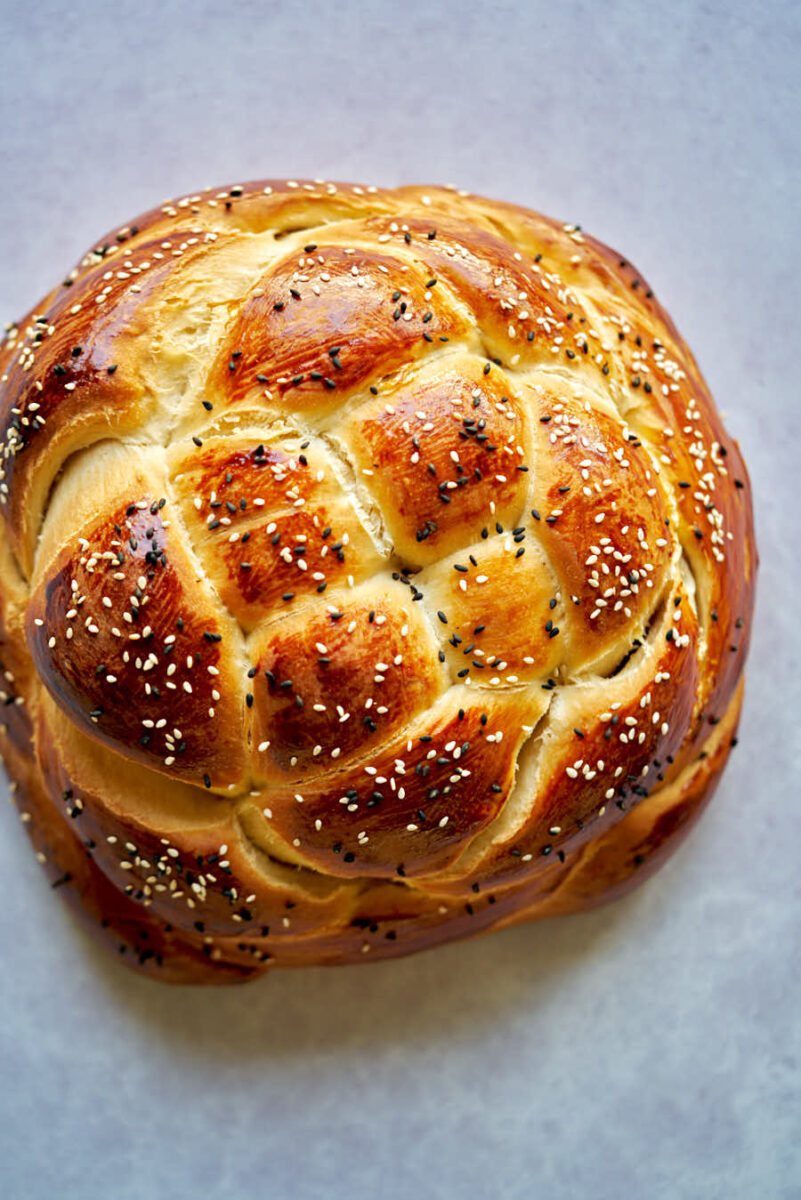
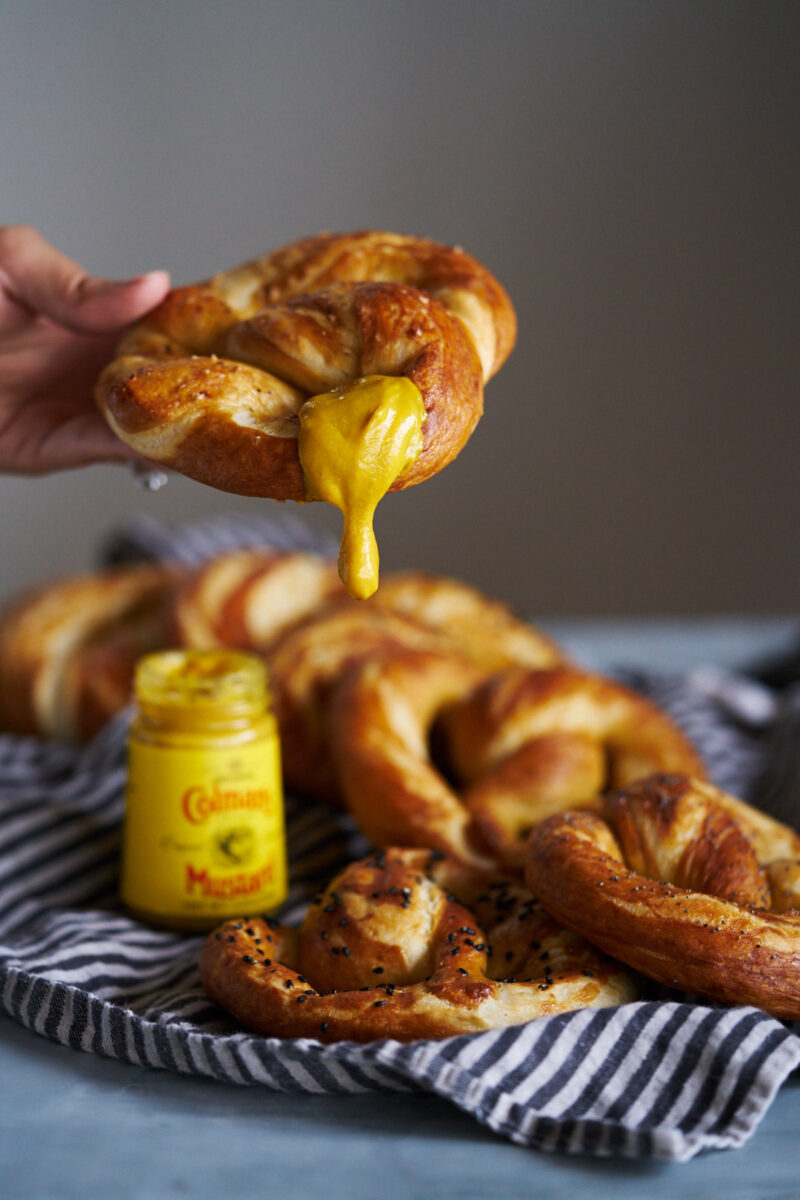
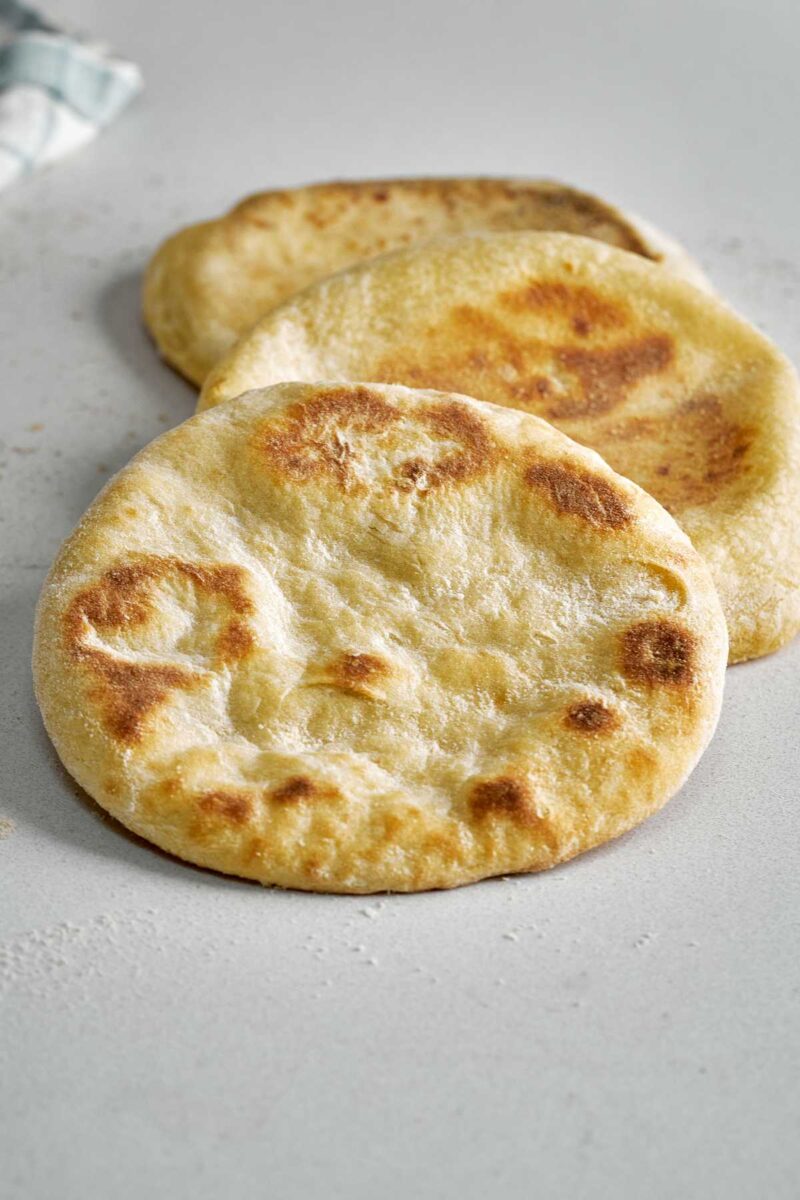
P.S. I found the ideal way to bake the dough is on a sheet pan filled with a layer of ceramic pie weights. The weights create a beautiful testure and detach easily from the baked dough.
Are you certain the quantites for the flours, water, and sourdough starter are correct? Did you adjust the flour and water quantities in the recipe using active yeast to adjust for the flour and water in the starter?
I made the dough and it was extremely loose, very unlike what appears in your video. I also looked at other recipes for sangak, and recipes for “whole wheat sourdough flatbreads, and your proportions deviate wildly from all the other recipes I found.
Thank you for your consideration.
Hi Colin, great questions! I have never made this without the starter, so I don’t adjust anything. I will try it and get back to you.
With dough, it is easy to adjust a runny dough by adding a bit more flour. Though I’ve never had to with this recipe, that is likely because my starter is a certain consistency that might be different from yours.
Thank you.